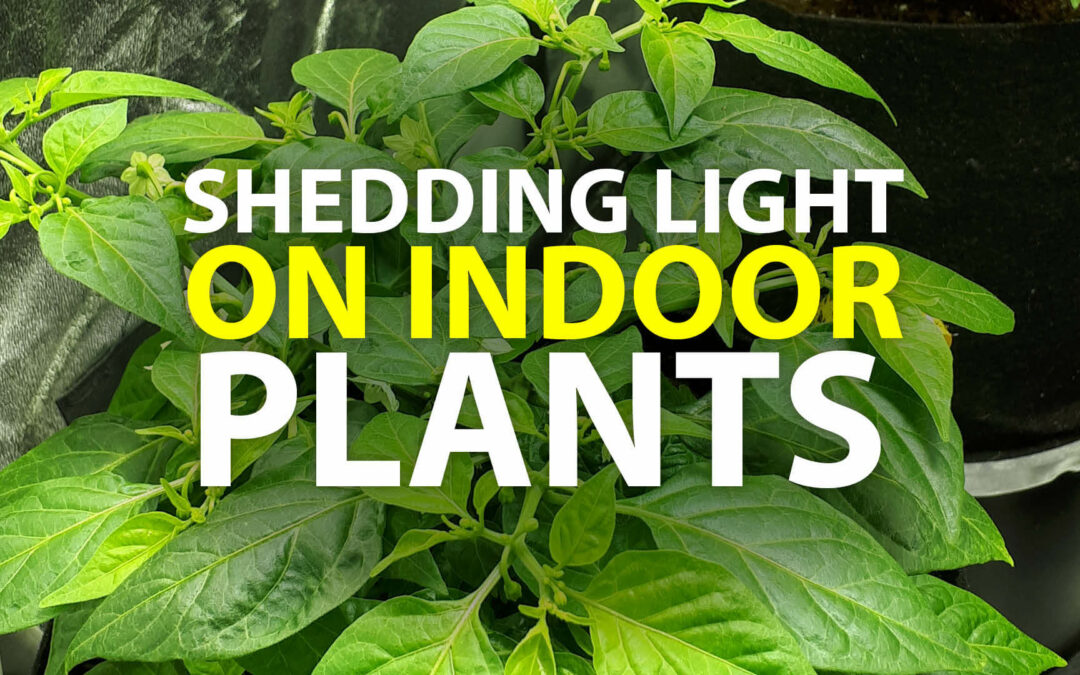The days are short and the sun is low. For us, up here in the Northern latitudes anyway, this means upping our vitamin D and working harder to maintain good vibes as the season progresses
For our plant friends, though, the consequences of these shorter days could be much more devastating. In the winter months it’s not just the cold air that can be a problem but also an overall lack of light.
WHAT IS LIGHT TO PLANTS ANYWAY?
We think of light as a visual thing – which makes sense because we are visual creatures. But what we can see is only a portion of the light bouncing around the universe. Visible light is somewhere near the middle of a broad range of energy wavelengths known as the electromagnetic spectrum – with radio waves at one end and gamma rays at the other.
Each of these different parts have different energy characteristics and interact with stuff in different ways. To plants light is life and they will use some visible light wavelengths and some wavelengths that we can’t see to drive all the processes that keep them alive.
DO DIFFERENT LIGHT COLOURS MATTER?
Definitely. Remember that different parts of the electromagnetic spectrum have different energy levels and won’t act the same when they encounter objects. Think of light through a prism – in goes white, out comes a rainbow – this happens because each colour that makes up visible white light is a different wavelength and interacts with the prism (in this case, bending) a little bit differently.
It is no different when light interacts with absolutely everything else on earth. Each wavelength is going to behave a little differently; my coffee mug is red because as an object it is absorbing all other visible wavelengths (maybe even some that aren’t) and my eyes perceive what’s coming back at me as red; the trees are green because they are absorbing all other visible wavelengths and we are seeing the energy being reflected back as green.
Plants, then, get very little energy from green light since most of it is being bounced off the leaves. While it is being discovered that plants do have SOME use for green, it is blue and red wavelengths that are the most important for plant growth – including some of the invisible reds and ultraviolet.
In general terms plants will use blue to put on vegetative bulk and red for reproductive and germination processes.
WHAT KIND OF LIGHT DO I NEED?
Well that all depends on your goals. There are four basic types of grow lights on the market – incandescent, fluorescent, gas discharge and LED. Each of these has its benefits and best uses:
Incandescent Bulbs:
These are your everyday run-of-the-mill light bulbs and they aren’t very good at turning electricity into light. Only about 10% of input energy is converted to light, the rest is heat, and though they are an okay source of red light they don’t put out much blue. This combined with their heat output make them impractical for most situations.
Fluorescent lights:
Fluorescent lighting is excellent for houseplants, starting seedlings, cloning, or growing leafy greens and sprouts. They come in both low- and high-watt curly style bulbs (Compact Fluorescent or CFL) and tube style (T5s or T8s). T5s are the most efficient of the tube style and ones labeled as high output (HO) deliver twice the light of standard ones and are available as single tubes or shop-light type fixtures that combine a few bulbs together. Small wattage CFL bulbs will fit in a regular light socket and are excellent for filling in a shady spot or giving smaller plants a boost through winter.
Gas Discharge Lights:
If you’ve spent any time researching lights you’ve seen the terms Metal Halide (MH) and High-Pressure Sodium (HPS) before. In addition to MH and HPS there is now double-ended HPS and CMH (Ceramic Metal Halide). The latter two being more efficient cousins to the former. Gas discharge bulbs generate light by using electricity to ignite specific gasses to emit specific spectrums. This process creates a bunch of light – but also a bunch of heat. If you are thinking of growing high-light requirement plants like most vegetables or cannabis this style of lighting should be considered since they will give you results worth your time and effort.
Gas discharge bulbs typically come in 400w, 600w and 1000w versions – and the size you want will depend on your ceiling height and the size of space you’re wanting to light. For most spaces 600w is plenty of light and strikes a good balance between available light, heat production and cost to operate.
LED:
The “new” kids on the grow-light block, LEDs offer great light output with a fraction of the energy inputs of gas discharge making them much cheaper to operate over the lifespan of the fixture. Small LED panels can be great for starting clones or seedlings and growing leafy greens – but don’t offer too much advantage over fluorescent for this use and won’t do well for fruiting or flowering.
LED panels strong enough to effectively flower a plant are, at the moment, expensive. However, when the savings on power, bulb replacement and heat evacuation are considered they will pay for themselves over time.
As you can see, there’s a lot of options when it comes to lighting your garden and it is one of the most critical elements of success. Making sure you’ve got enough at the start will save a mountain of headaches down the road.
Did you enjoy this article? If so, go ahead and join our
NEWSLETTER COMMUNITY

Why join our newsletter community?
-
Latest tips and tricks on gardening
-
Monthly articles
-
scottsnursery.tv latest episodes
-
Gift card giveaways

JOIN TODAY! ENJOY YOUR MONTHLY BENEFITS OF OUR NEWSLETTER.



Recent Comments